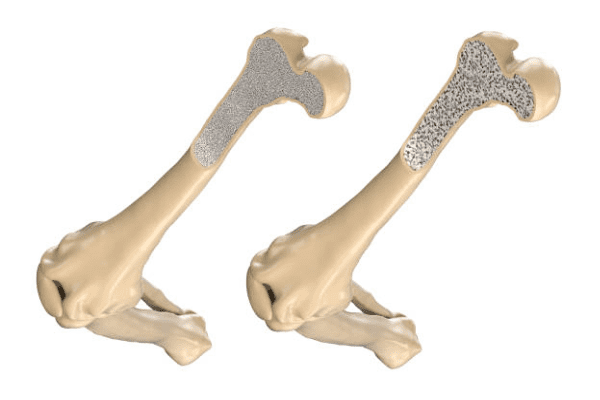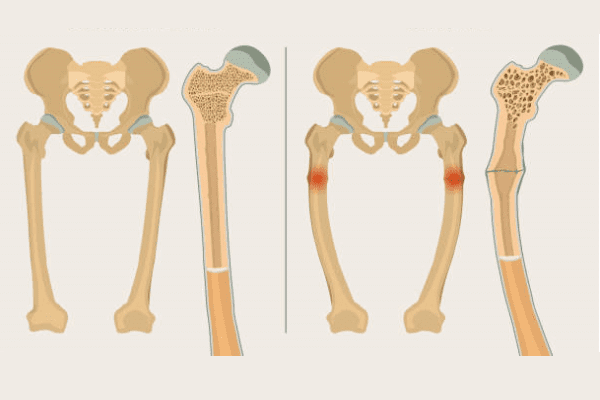Endocrinology >>>> Osteomalacia
Osteomalacia.

Osteomalacia is a condition of the body associated with a violation of mineralization in an adult, newly formed as a result of remodeling of the bone matrix. In childhood, a similar condition of a mineralization defect in the epiphyseal growth plates, which causes bone deformation and growth retardation, is called "rickets".

Osteomalacia begins to develop against the background of a lack of at least one of several factors that ensure successful bone mineralization: a sufficient level of concentration of calcium, phosphates, vitamin D and at the same time normal activity of alkaline phosphatase - an enzyme that hydrolyzes phosphoric acid esters in an alkaline environment and provides phosphorus - calcium metabolism.
The causes of osteomalacia are associated with a number of pathologies:
- Disorders of metabolism and consumption of vitamin D by the body (hyperparathyroidism, hypophosphatemia, hypocalcemia) against the background of intestinal diseases, pancreatitis, gastrectomy, lack of UV;
- Liver dysfunctions (25-hydroxylation);
- Impaired renal reabsorption;
- Pathological target organ response to calcitriol;
- Pathology of osteogenesis (violation of the processes of reconstruction and renewal of bone tissue);
- Taking medications that slow down mineralization (biophosphonates, fluorides, corticosteroids, antacids).
Osteomalacia signs:
- The asymptomatic course is detected by bone desynttometry when diagnosing osteopenia (osteomalacia is considered one of the reasons for the development of osteopenia);
- Bone pain (independent or on palpation) in the lumbosacral region;
- Muscle weakness in the limbs (duck gait);
- Frequent fractures, even with minor trauma;
- Deformities of the skeleton in an adult (curvature of the pelvis, chest, spine).
Osteomalacia is diagnosed on the basis of examination, bone desyntometry, histomorphometric examination (to study the rate of bone formation) and laboratory studies of the level of phosphates, calcium (analysis for trace elements) and the level of alkaline phosphatase.
Osteomalacia treatment has several goals:
- Eliminate vitamin D hypovitaminosis: therapy with active metabolites of vitamin D and their analogues, exclusion of protective creams from UV rays from everyday life, walking in the open sun (sunbathing, not tanning);
- Eliminate hypocalcemia: calcium preparations and drugs that help the absorption of calcium (calcitriol), plus a diet enriched with calcium-containing foods;
- Eliminate phosphatemia: phosphorus preparations are indicated (rarely used in adults) and a diet with a high phosphorus content in food.

Read

Read



























